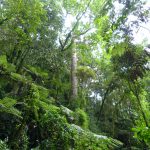 KIT DIARY – expedition 1 – April/May 2015
KIT DIARY – expedition 1 – April/May 2015
In April 25th, at the Milan airport we greet other two members, the journalist Silvia Bernardi and the video-maker Martino Vincenzi. After months spent planning the trip, we are finally ready to go. Luckily, the 78 kilograms of luggage overcome the stopover in Addis Abeba and arrive undamaged at Dar ES Salaam, and we too.
Here, in the largest city of Tanzania, we stay two days to prepare for the expedition in the forest, enjoying the hospitality of the CEFA staff (organisation based in Bologna, Italy, operating in social cooperation) who receive us in their hotel.
In April 27th, we leave Dar Es Salaam to reach the Udzungwa Ecological Monitoring Center (UEMC), the field research station of the Museum of Science of Trento (MUSE) in the vicinity of the Udzungwa Mountains National Park. Simon Loader, herpetologist and geneticist at the University of Roehampton, UK, joins us along the way.
Our stay in the field station aims at testing whether the kit and the reagents have survived the journey and if we are ready to work in non-conventional conditions. Unfortunately, easily capturing a frog is the only thing that works. The thermocycler doesn’t collaborate, it seems impossible to install the off-line version of the software for adjusting the DNA sequences produced by the MinION and the wi-fi connection is too poor to use the on-line one.
The first of May we leave the field station feeling very blue. After a few hours driving, we arrive close to the mountain forest that will host our experiment and we hire some local people to help us transporting the luggage into the forest. It rains, we need to set the kit and our stuff under a tent and then we go looking for frogs. Luckily, although the wet season is almost over, we are able to catch a little brown frog illuminated by our torches. Moved by the enthusiasm, we start performing DNA extraction and amplification straight away, even if it is quite late.
After a very wet sleep, we spend the next day carrying out more PCRs and the first sequences start to be produced. Our mood gets better.
The third of May is all about producing sequences, but we cannot analyse them because of the same issues faced at the UEMC. Anyway, failing is not an option we want to consider. Therefore, Massimo leaves the field to find a place with better wi-fi coverage and to obtain the consensus sequence we need.
The fourth of May is a memorable day: during the live streaming conference with the MUSE, our colleagues in Italy perform a blast of our sequences (a sort of comparison) with those in GenBank and we are told that the kit has worked well! The frog we have sequenced corresponds 95% to the species Arthroleptis xenodactyloides. This is a double achievement. Not only we successfully carried out DNA analyses outside a conventional lab, but the frog we sequenced could also be a new species! (biodiversity is so high in East Africa that it is probable that in many places there are still unknown species)
Only when back to Italy we will find out that our sequence contained little mistakes that lowered the percentage of identity during the first blast with the GenBank sequences. That famous frog is not a new species, but a true Arthroleptis xenodactyloides. Not so bad though, this experience gives us an idea about the amount of work there is still to do to get a mobile DNA sequencing kit which is a bit more stable and easy to use. We are only at the beginning of the adventure…
Still in the forest we celebrate drinking good whiskey, trying to realise what happened, that is a small leap for the frog, but a big step for scientific research.



